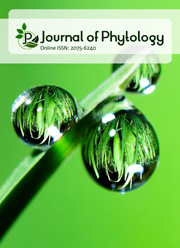Phenylalanine ammonia-lyase expression and pyranocoumarin accumulation in Angelica gigas plantlets exposed to light-emitting diodes
DOI:
https://doi.org/10.25081/jp.2021.v13.7018Keywords:
Angelica gigas, decursin, decursinol angelate, light-emitting diodes, phenylalanine ammonia-lyase, transcriptionAbstract
Angelica gigas (Dang Gui) is an important medicinal plant. In this study, we examined the accumulation of pyranocoumarin (decursin and decursinol angelate) and the expression of phenylalanine ammonia-lyase (PAL) in Korean angelica plantlet grown under different light-emitting diodes (LEDs) (red, orange, green, blue, and white). Three weeks after LED exposure (WAE), the transcript levels of phenylalanine ammonia-lyase mRNA in seedlings grown under orange LEDs were 4-, 18-, and 7-fold higher than those in seedlings grown under green, blue, and white LEDs, respectively. The decursinol angelate content was almost double than the decursin content. The highest levels of decursin (3.2 mg/g dry weight) and decursinol angelate (6 mg/g dry weight) were detected in plants grown under orange LEDs, at 2 WAE. Therefore, we suggest that orange LEDs may affect decursin and decursinol angelate accumulation. The findings of this study could help to determine an effective strategy for producing secondary metabolites in A. gigas using LED technology.
Downloads
Published
How to Cite
Issue
Section
Copyright (c) 2021 Yeon Bok Kim, Woo Tae Park, Ramaraj Sathasivam, Seon Kyoung Yeo, Gong In Lee, Jong Seok Park, Sang Un Park

This work is licensed under a Creative Commons Attribution 4.0 International License.





 .
.